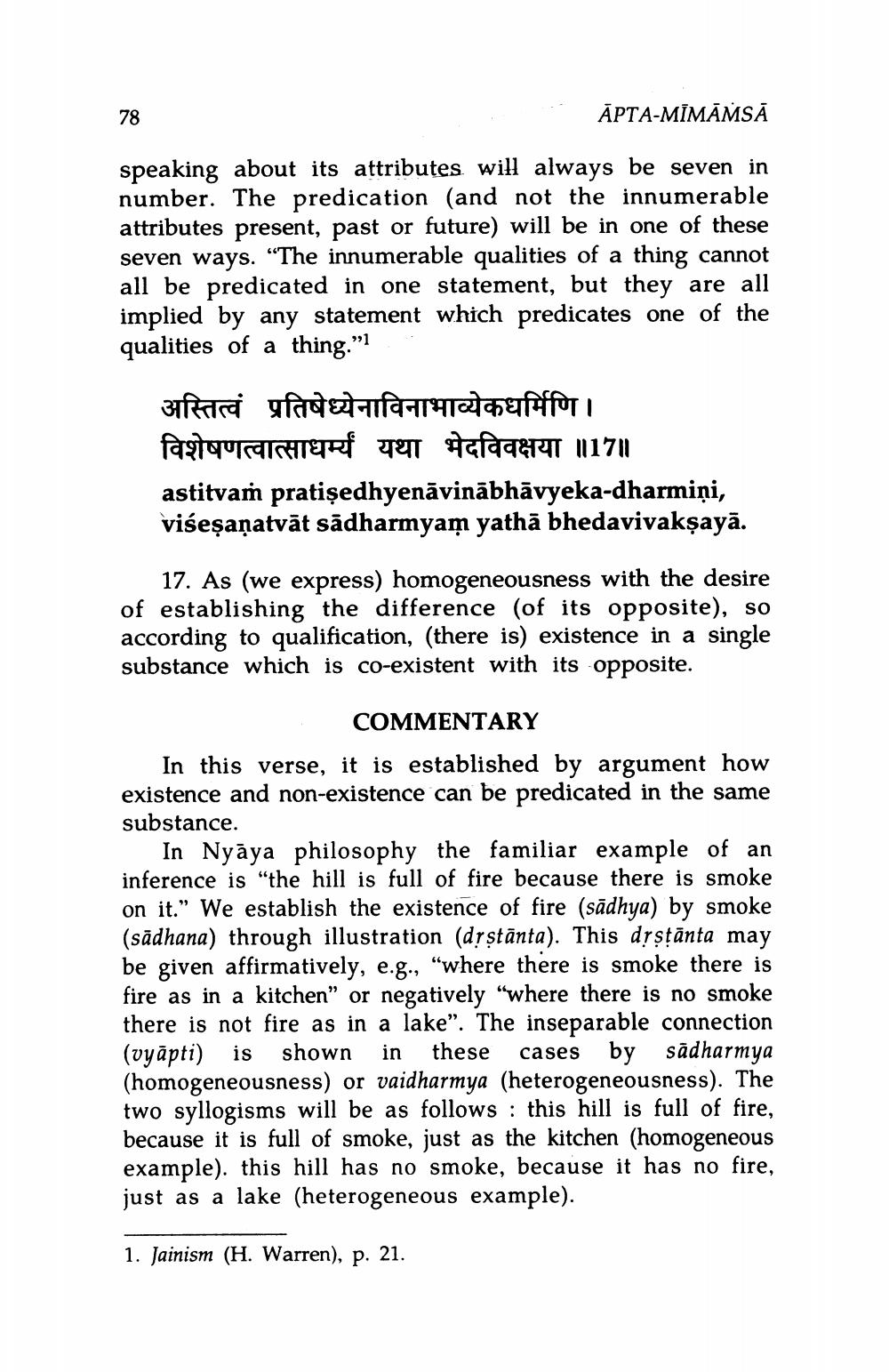________________
78
APTA-MĪMĀMSĀ
speaking about its attributes will always be seven in number. The predication (and not the innumerable attributes present, past or future) will be in one of these seven ways. “The innumerable qualities of a thing cannot all be predicated in one statement, but they are all implied by any statement which predicates one of the qualities of a thing."
अस्तित्वं प्रतिषेध्येनाविनाभाव्येकधर्मिणि। विशेषणत्वात्साधर्म्यं यथा भेदविवक्षया ॥17॥ astitvam pratişedhyenāvinābhāvyeka-dharmiņi, višeṣaṇatvāt sādharmyam yathā bhedavivakṣayā.
17. As (we express) homogeneousness with the desire of establishing the difference (of its opposite), so according to qualification, (there is) existence in a single substance which is co-existent with its opposite.
COMMENTARY In this verse, it is established by argument how existence and non-existence can be predicated in the same substance.
In Nyāya philosophy the familiar example of an inference is "the hill is full of fire because there is smoke on it.” We establish the existence of fire (sādhya) by smoke (sādhana) through illustration (drstānta). This dȚstānta may be given affirmatively, e.g., "where there is smoke there is fire as in a kitchen” or negatively "where there is no smoke there is not fire as in a lake”. The inseparable connection (vyāpti) is shown in these cases by sādharmya (homogeneousness) or vaidharmya (heterogeneousness). The two syllogisms will be as follows : this hill is full of fire, because it is full of smoke, just as the kitchen (homogeneous example). this hill has no smoke, because it has no fire, just as a lake (heterogeneous example).
1. Jainism (H. Warren), p. 21.




